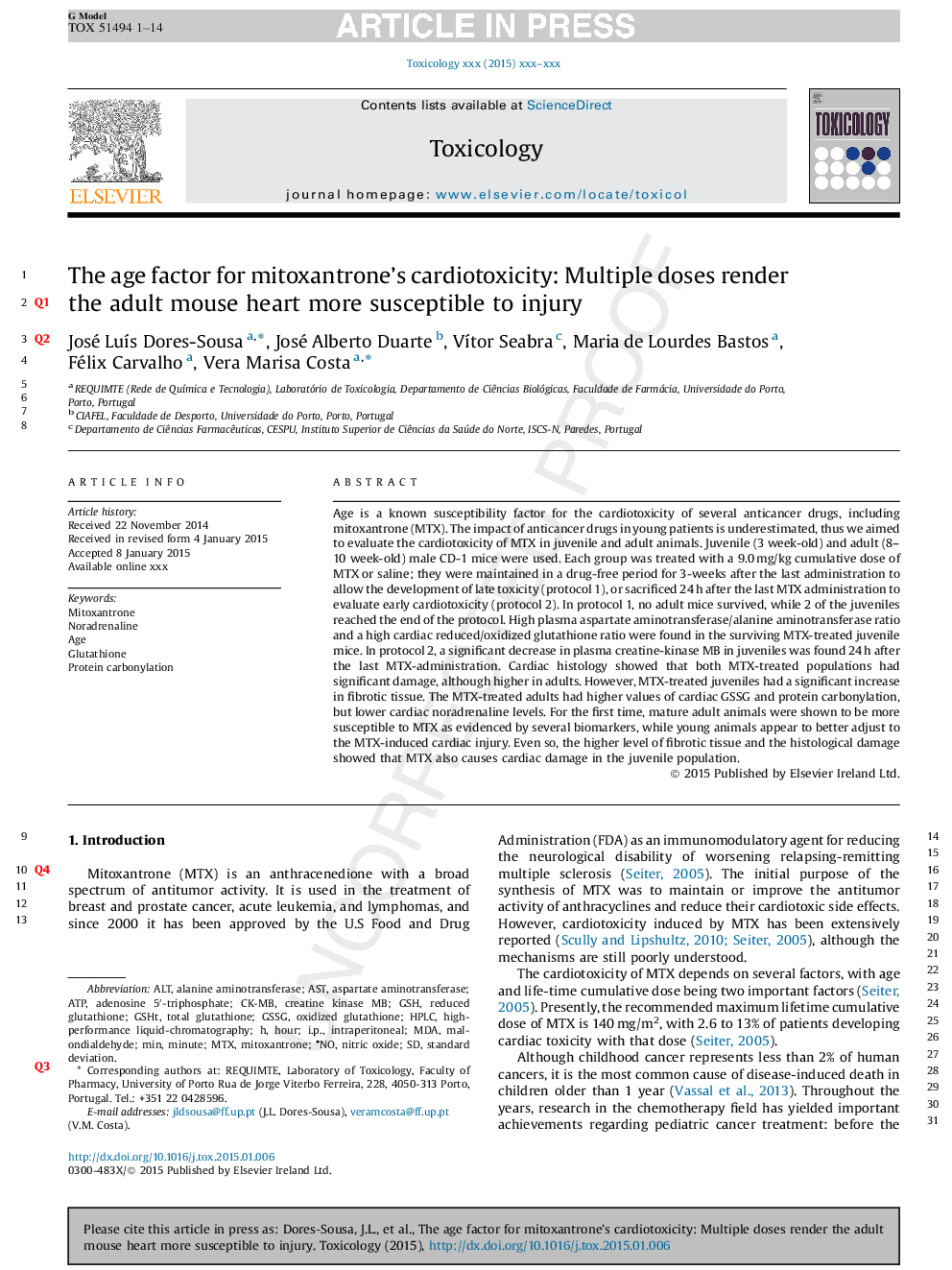| Article ID | Journal | Published Year | Pages | File Type |
|---|---|---|---|---|
| 5859180 | Toxicology | 2015 | 14 Pages |
Abstract
Age is a known susceptibility factor for the cardiotoxicity of several anticancer drugs, including mitoxantrone (MTX). The impact of anticancer drugs in young patients is underestimated, thus we aimed to evaluate the cardiotoxicity of MTX in juvenile and adult animals. Juvenile (3 week-old) and adult (8-10 week-old) male CD-1 mice were used. Each group was treated with a 9.0Â mg/kg cumulative dose of MTX or saline; they were maintained in a drug-free period for 3-weeks after the last administration to allow the development of late toxicity (protocol 1), or sacrificed 24Â h after the last MTX administration to evaluate early cardiotoxicity (protocol 2). In protocol 1, no adult mice survived, while 2 of the juveniles reached the end of the protocol. High plasma aspartate aminotransferase/alanine aminotransferase ratio and a high cardiac reduced/oxidized glutathione ratio were found in the surviving MTX-treated juvenile mice. In protocol 2, a significant decrease in plasma creatine-kinase MB in juveniles was found 24Â h after the last MTX-administration. Cardiac histology showed that both MTX-treated populations had significant damage, although higher in adults. However, MTX-treated juveniles had a significant increase in fibrotic tissue. The MTX-treated adults had higher values of cardiac GSSG and protein carbonylation, but lower cardiac noradrenaline levels. For the first time, mature adult animals were shown to be more susceptible to MTX as evidenced by several biomarkers, while young animals appear to better adjust to the MTX-induced cardiac injury. Even so, the higher level of fibrotic tissue and the histological damage showed that MTX also causes cardiac damage in the juvenile population.
Keywords
GSHtMDACK-MBMitoxantroneGSHMTXi.p.GSSGALTadenosine 5′-triphosphateATPASTAspartate aminotransferaseAlanine aminotransferasestandard deviationMinintraperitonealminuteHourAgemalondialdehydenoradrenalineNitric oxidereduced glutathionecreatine kinase MBProtein carbonylationHigh-performance liquid-chromatographyHPLCGlutathioneoxidized glutathionetotal glutathione
Related Topics
Life Sciences
Environmental Science
Health, Toxicology and Mutagenesis
Authors
José LuÃs Dores-Sousa, José Alberto Duarte, VÃtor Seabra, Maria de Lourdes Bastos, Félix Carvalho, Vera Marisa Costa,
